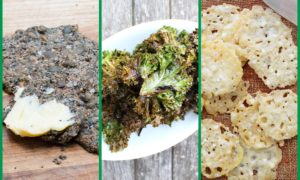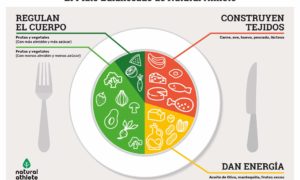Estimated reading time: 3 minute(s)
The increase in the world’s population combined with higher incomes in growing nations has changed eating patterns, one of these changes is the increased desire for animal based proteins. And, until not long ago, talking of eating meat without having to continue to kill animals sounded completely absurd, however it’s now become an increasingly trendy reality, known as “fake meat” or “meat-less meat”. But do we know how these products are really made and what effect they can have on our bodies?
Replacement Foods: Vegetable Meat
In many countries plant-based burgers have gone viral, they don’t just look like burgers they taste like them too, they even bleed! The story of plant-based burgers began in 2009 when the current founder of Impossible Foods, Patrick Brown, decided to focus on reducing meat consumption, so he chose the most symbolic food from the United States Of America, the hamburger, thus creating the “Impossible Burger”.
This company made a very interesting discovery, which is that one of the components of hemoglobin, the heme molecule is what gives blood its characteristic color, and is what makes this fake meat taste and smell like real meat. Thanks to that discovery, this effect has been replicated using vegetables. The launch of this ‘hamburger’ is expected to revolutionize the meat industry giving way to alternatives for steak, cheese, bacon, sausages, and bluefin tuna.
The Impossible Burger is made with water, wheat protein, coconut oil, potato protein, natural flavors and other substances such as yeast extract, soy protein isolate, Xanthan gum or salt. The balance between all of these ingredients, and many more, is what allows it to simulate an actual hamburger.
Impossible Foods’ main competitor is a company called Beyond Meat,although they don’t have the same amount of recognition as Impossible foods, they have grown exponentially throughout 2019. Their “fake meat” ’is a mixture of mainly soy protein, pea protein, and yeast; as well as products that mimic chicken meat which are based on a blend of soy protein, peas, fiber, and other ingredients. It was in 2016 when they launched one of their star products, the Beyond Burger: a vegetable burger made from pea protein that provides 20 grams of protein, does not contain any soy, gluten, GMOs, or cholesterol, and provides half the saturated fat of a traditional beef burger.
So what are the advantages? Beyond just protecting animals and the real taste and texture it gives us, is that this product is projected to help fight against malnutrition as costs continue to drop. What’s more, the creators have highlighted that, compared to producing a normal cow burger, the vegetable version will help to protect the environment since it requires 95% less land, produces almost 90% less greenhouse gases and saves more than 70% water.
Regarding the Safety of safely consuming this product, the Food and Drug Administration (FDA) has said that it’s safe for human consumption. Of course, there are some discrepancies: The Center for Food Safety has raised concerns about the use of the genetically modified soybean leghemoglobin as an additive. CFS alleges that the FDA did not request proof of the raw product and that studies supporting its safety were conducted in part by workers at Impossible Foods.
Printed Vegetable Meat
Yep, you read that right! In 2018, a meat substitute was created using a plant-based paste with syringes placed in a 3D printer and with AutoCAD software to mimic the natural structure of meat tissue.
The company in charge of this was a food technology startup called NovaMeat in Spain, that works with meat substitutes that are plant based. Its creator, Giuseppe Scionti, pointed out that this vegetable paste manages to reproduce the protein properties of a beef steak through amino acids obtained from the proteins of peas and rice.
Although I have only mentioned a couple of companies here, there are many that are breaking into this upward market trend today. Another interesting topic is laboratory meats, which are still in the regulatory approval and cost improvement stages.
Cultured Meat
Also known as clean meat, laboratory meat or in vitro meat, is a project that came to light in 2013 at the hands of the Dutch scientist Mark Post. This project joins science and technology together making the need to kill animals non-existent. The process consists of extracting cells from the skin of chickens, cows, fish or pigs, and adding plant nutrients to multiply the muscle tissues.
Due to the nature of the process, Post points out that it takes around 9 weeks to produce a single hamburger, and when the project started, making 1 pound of “meat” cost more than $ 10,000. However, by 2021 cultured meat could start being sold in grocery stores for around 9 euros. The Good Food Institute, a non-profit company tasked with producing meat in vitro, is evaluating options in order to do this process on an industrial scale through bioreactors that improve the speed at which stem cells transform into muscle fibers.
OK, SO WE HELP THE PLANET, BUT WHAT ABOUT OUR HEALTH?
Another big question with fake meat is the effect it can have on our health. And although at an environmental and animal level many of the benefits mentioned are indisputable, however, the consequences that they may have on our bodies are highly disputed. At a nutritional level, meat that is not meat is very similar to the product it substitutes, however, many nutritional specialists question the impact that this type of processed and modified food can have on our cells. While its effect is unknown in great detail, the ideal thing is to prioritize natural products such as pasture-raised cows. The aim is to avoid over-processed meats containing large amounts of sulphites or hormonal cows that have been given antibiotics.
Additionally, some plant-based meats such as the one from the Impossible Burger and laboratory meats use genetically modified organisms (GMO) in some stages of making fake meat, which is why this product has not reached the European market as of yet.There are still many doubts about how GMOs are obtained and the way in which the genetic code is manipulated to obtain the desired result.
If you found this article about Fake Meats interesting, check out these:
Obese and Overweight: Bad Allies Against The Coronavirus
What Should I Eat To Boost My Immune System?
Hidden Sugars in Our Daily Diets
Avoiding carbs: The Best Option












